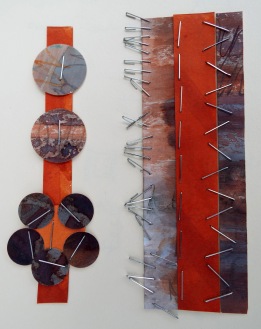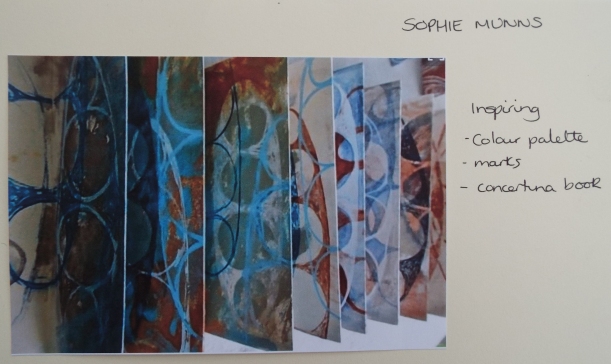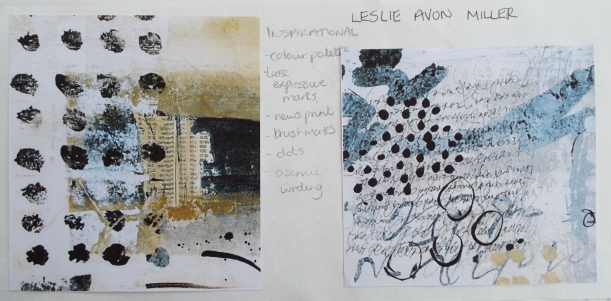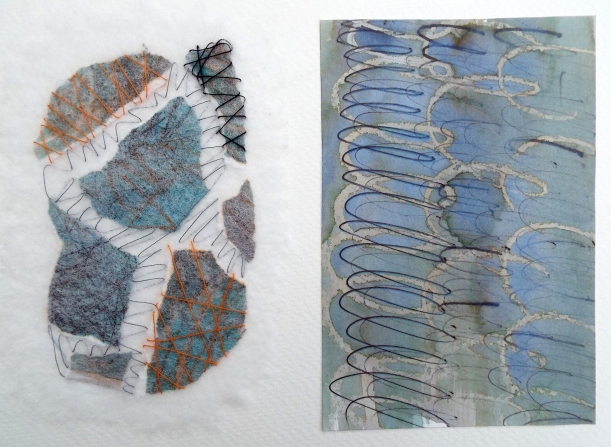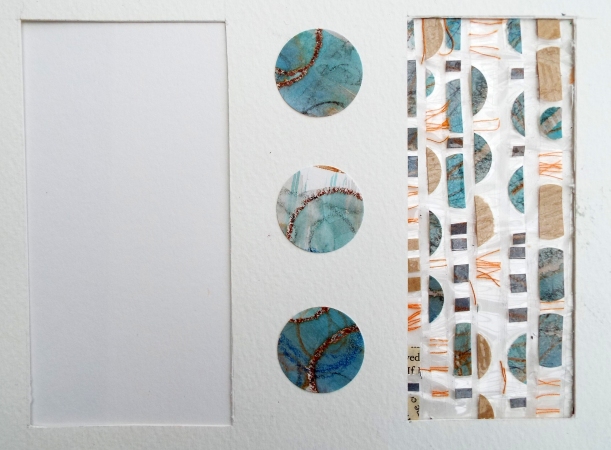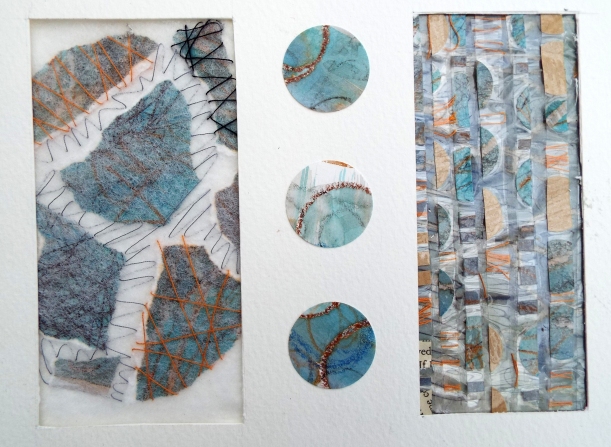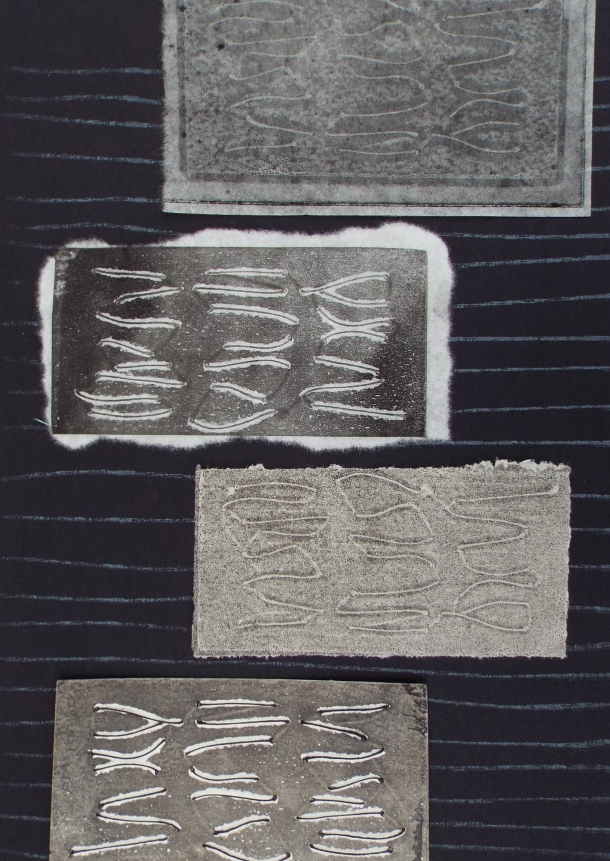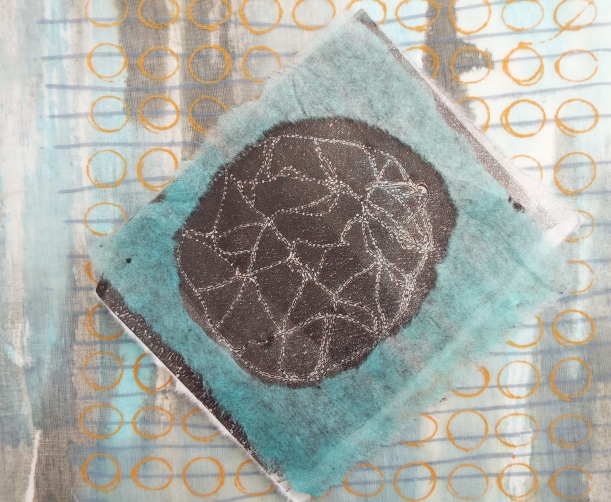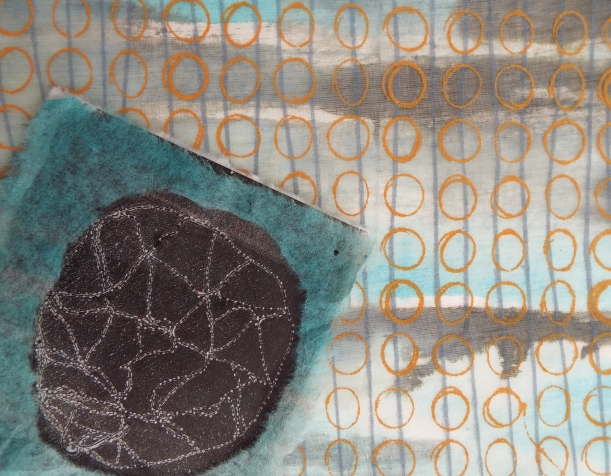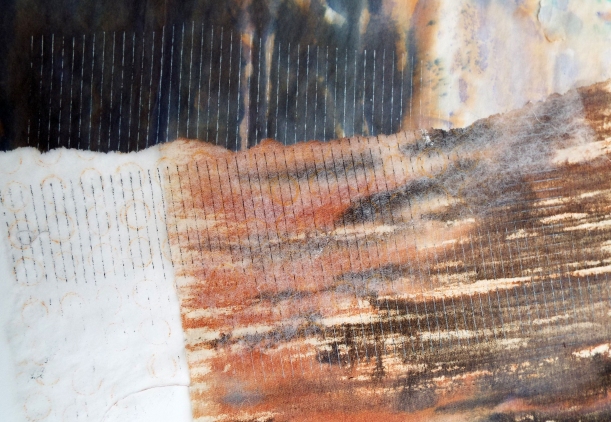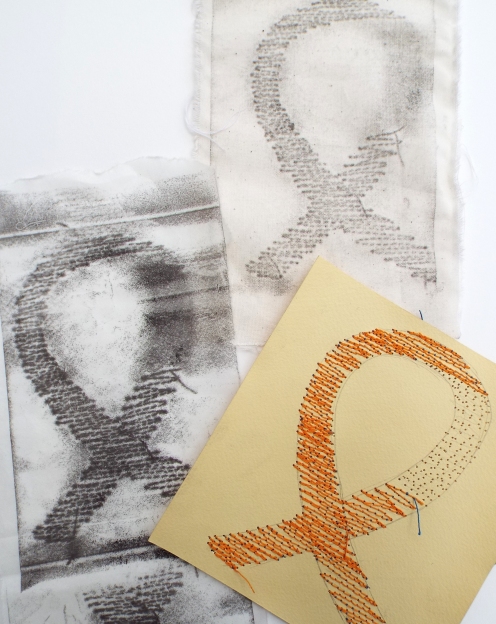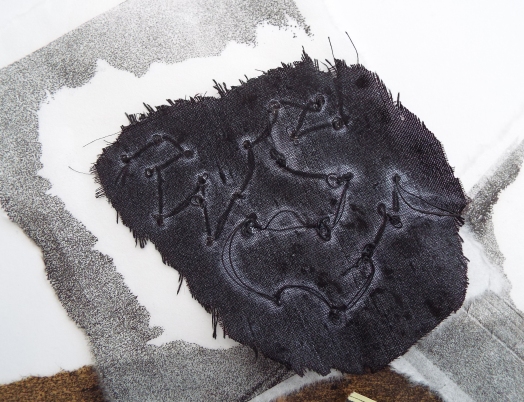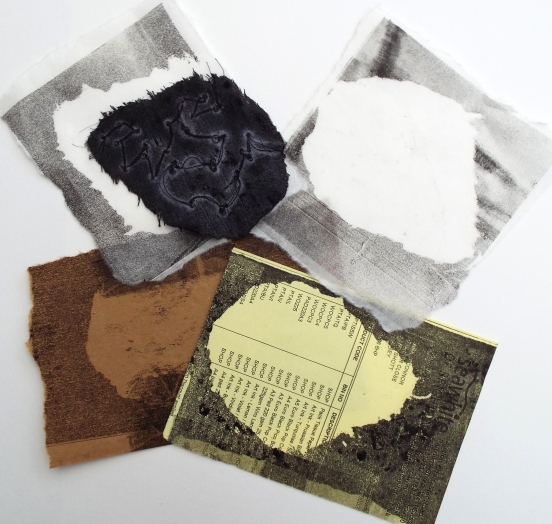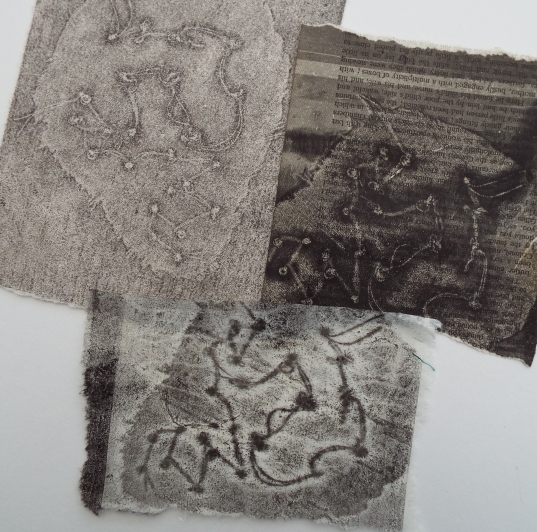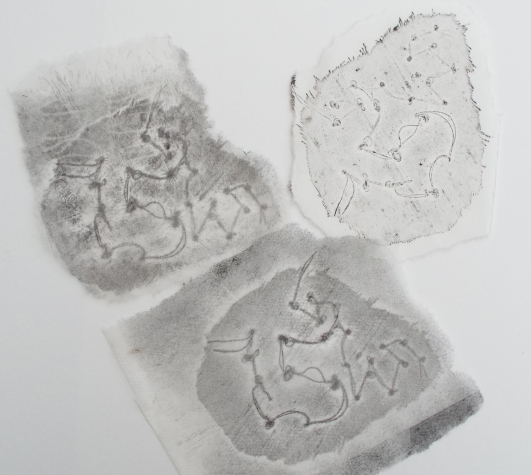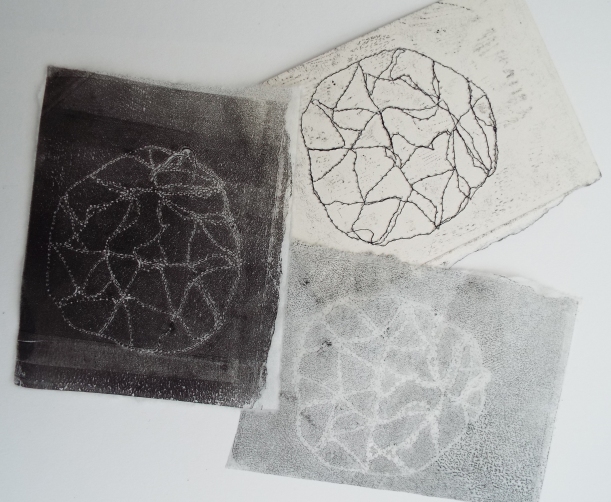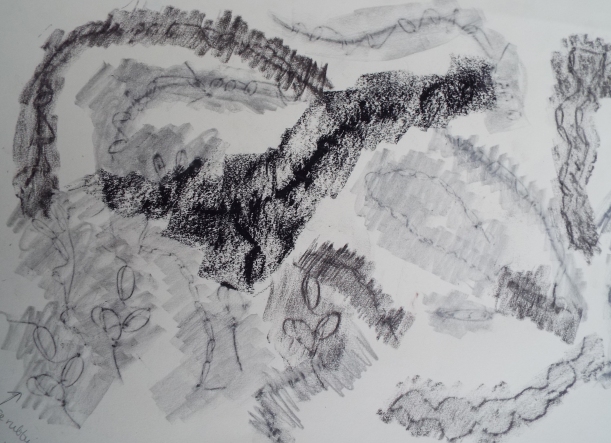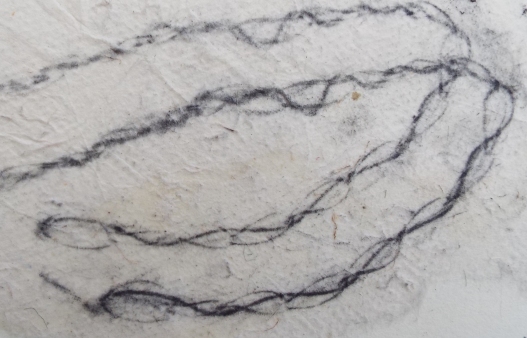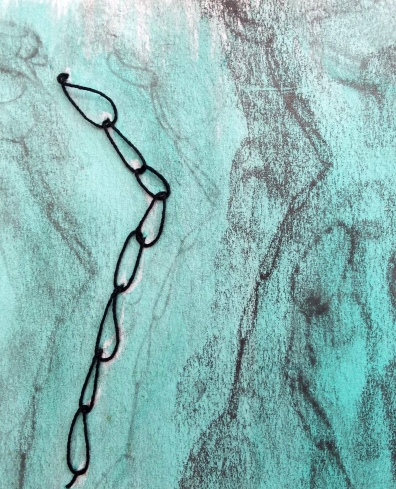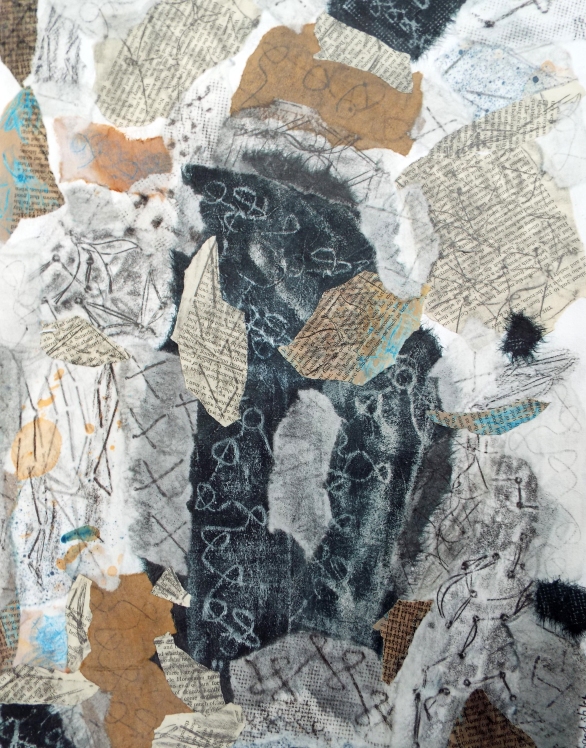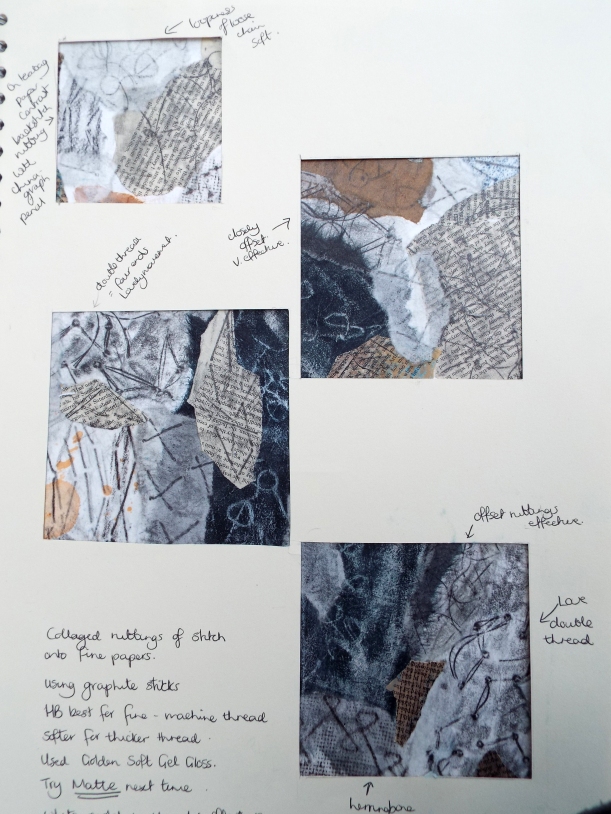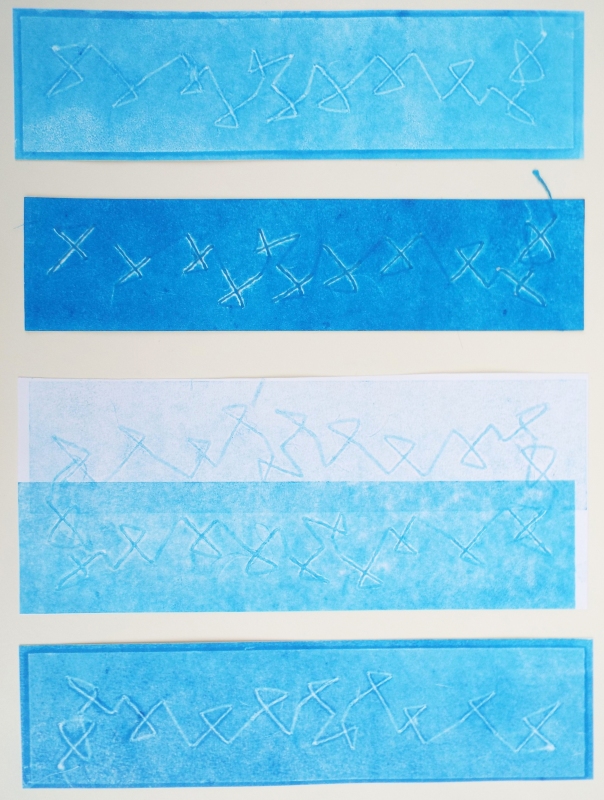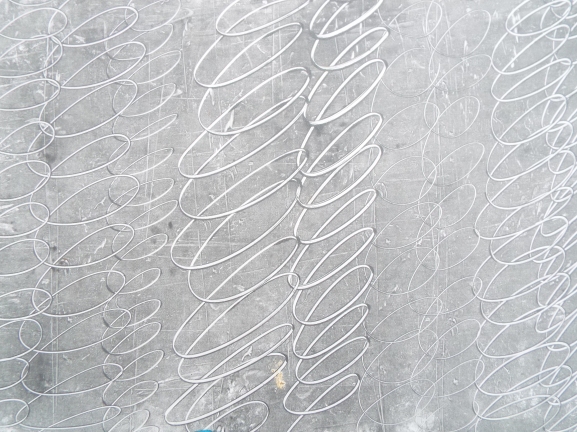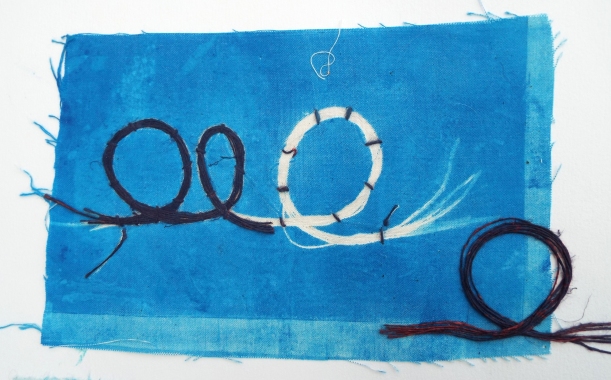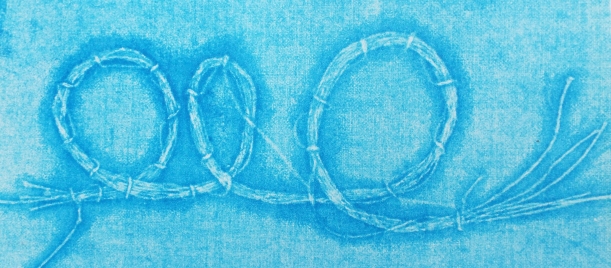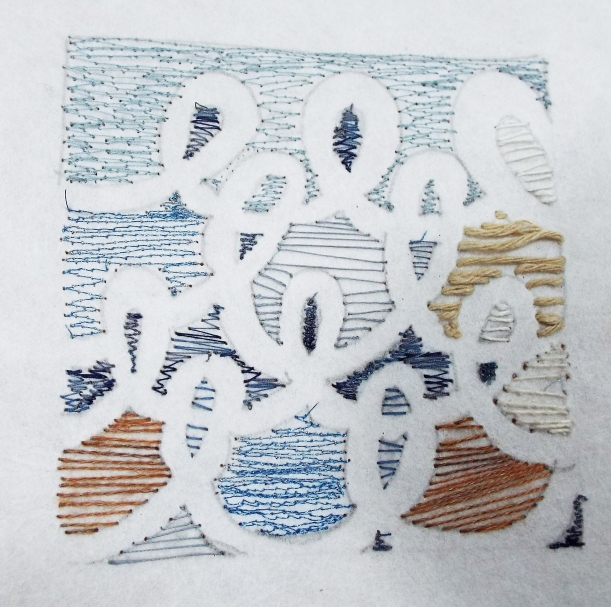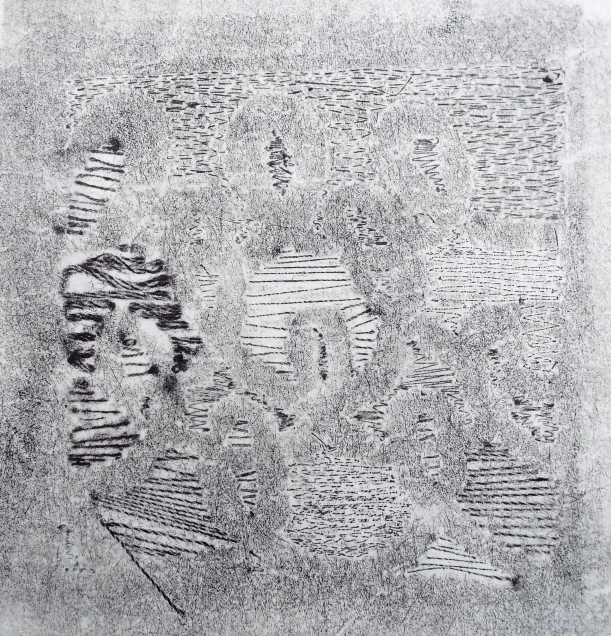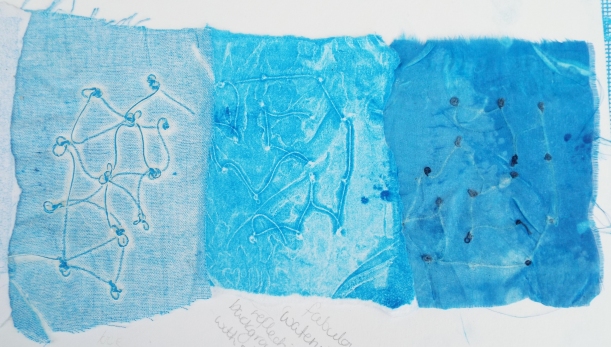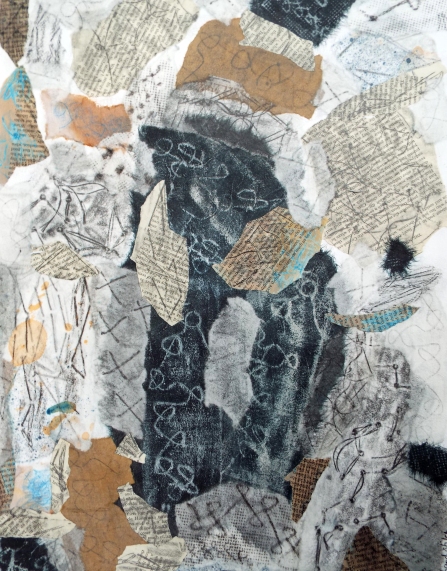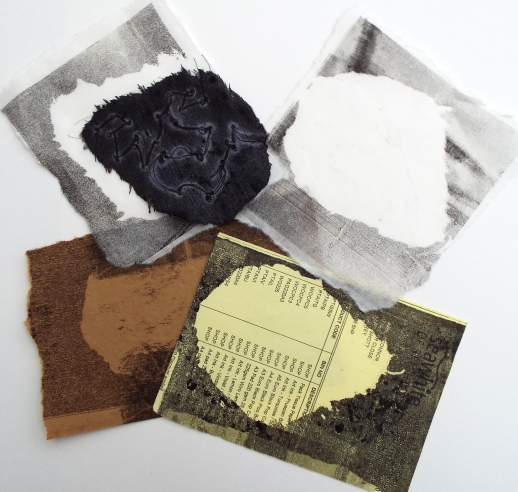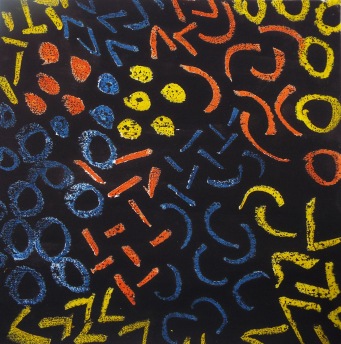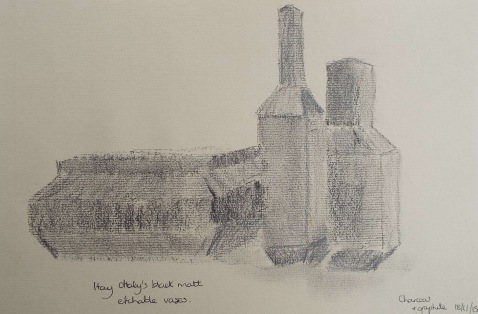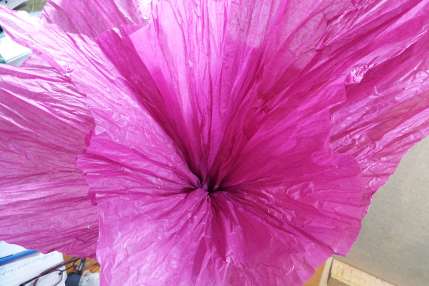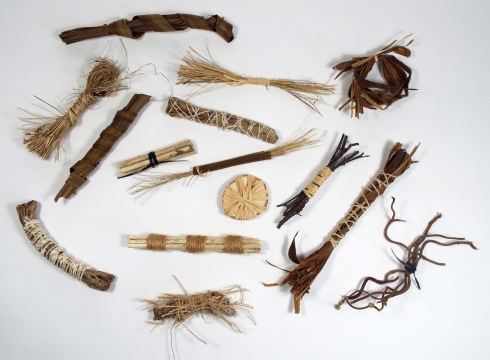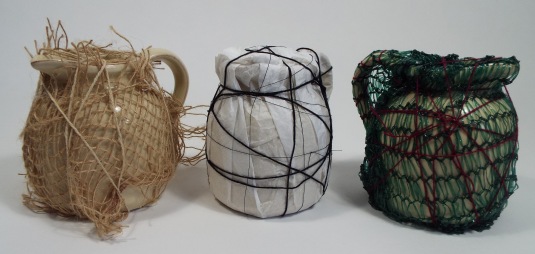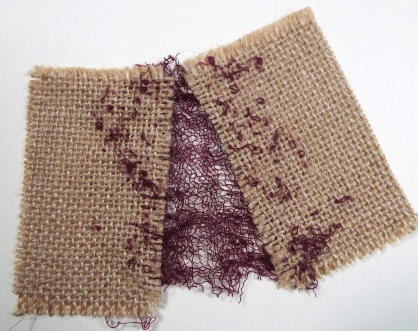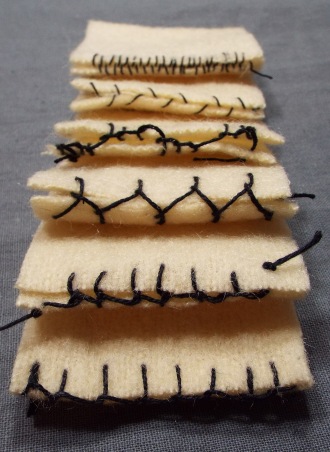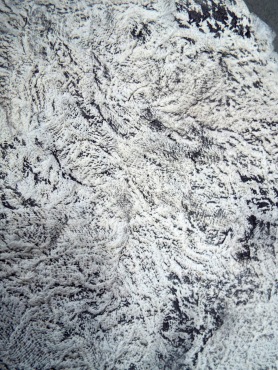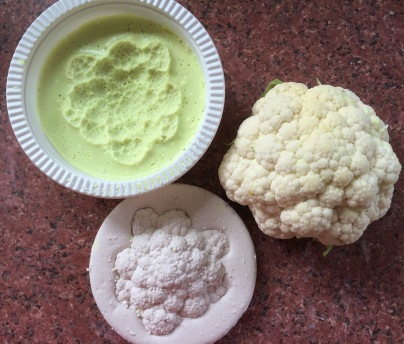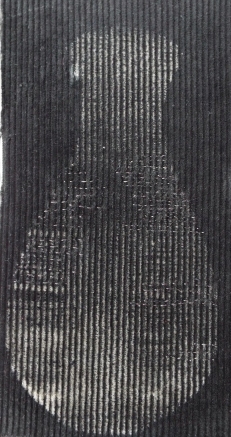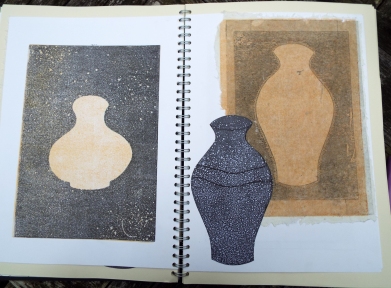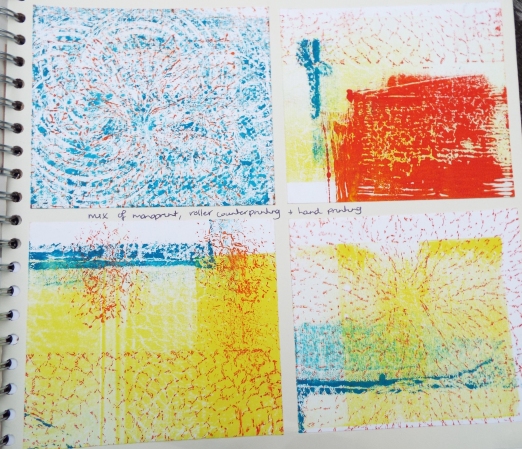To determine how to present my prints as a finished sample, the artists researched in this assignment were revisited. My initial thoughts were to assemble a collage on a canvas or make an artist’s book. However, once I revisited the artists whose work I’d admired, I quickly went off the idea of a canvas. It seemed a bit two dimensional, perhaps dated and a three dimensional book was more tempting. I had admired Ann Symes’s book art, Sophie Munns’ accordian books and Leslie Avon Miller’s small journals, so I looked for a few more examples, some of which are included below.
Thinking about the painted papers and collaged prints on tissue, I was also inspired by Linda Welch’s book art.
I had struggled to find examples of print from stitch and was delighted when an OCA peer recommended Annwyn Dean to me. She is an embroiderer, printmaker and book artist. I was interested to note that the “iconography” used in her design “evolves from the embroidery fragments that were made in India in the C18th for the export market” and was fascinated to see the lovely shapes and designs she has produced as a book artist.
I recall my inability to get excited with pleating in Assignment 1 and now see it holds much potential and very much look forward to exploring book forms in the future.
Referring to Alisa Golden’s book, Making Handmade books, some samples were made using papers from my ‘stash’, starting with the simpler folding techniques.
The following is ‘XBook’, made from a single sheet of A4 printed on one side which had been used to test/clean the roller whilst printing.
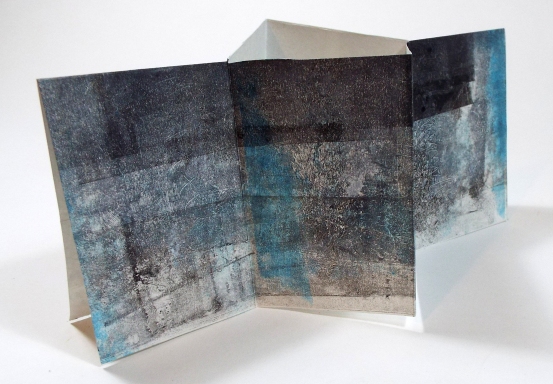
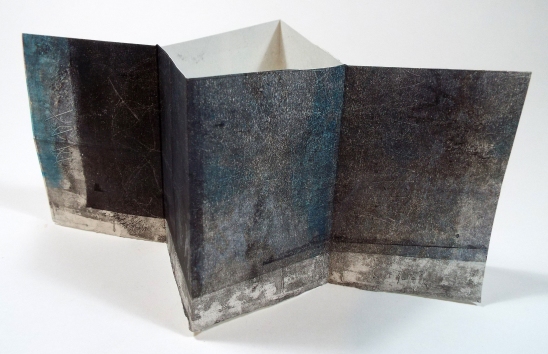
I was surprised and encouraged by how pleasing the structure was, it stood reasonably well, although one edge of the paper was deckled, a learning point for next time to cut all edges smoothly. It was easy to to stand and would display prints or collaged papers well.
Moving on, I made ‘Pants Book/Simple Accordion’, again with a single sheet of A4 and similar sized pages to the above.
This too was quite a surprise, I could see it working, although had a slight preference for the XBook which less fussy and easier to stand.
Next was a Pants Book/Simple Accordion with Tunnel, made with a single sheet of khadi paper, I was looking forward to this as I like the texture of hand made paper and was interested in the idea of the windows created by the ‘tunnel’. I was disappointed. It just did not have the appeal of the crisp finishes and sharp folds of the first two books. It may have improved had it not been a plain sheet but I could not imagine it adding any value to my prints.
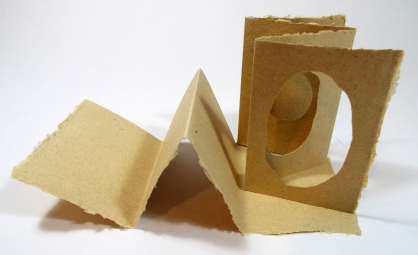
A ‘Snake Book’, also from a single sheet of A4 but with more folds, so additional, but smaller, pages:
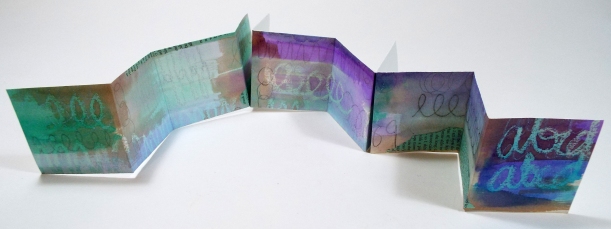

This too was disappointing, it was difficult to display easily and didn’t stand as well as hoped.
The finished ‘Guest Book’ below measures approximately 8.5 x 5.5 cm and was made from a sheet of A4.
This was quite pleasing, nice to hold and showed none of the blank side of the page. It’s a lightweight cartridge paper with glued folded pages but not as neat or cleanly made as some of the others. I might make this style of book again as a gift for a friend or to display painted papers, but think neatly cut single layers of paper with the grain all in one direction is more suited to my purpose now.
The ‘Concertina with Tabs’ below was quite exciting, definitely competing with the favourite two so far. One appealing characteristic was the fact that it was made with individual pages, in this case 14 x 21.5 cm, which were then joined with the tabs which would be more practical when printing.
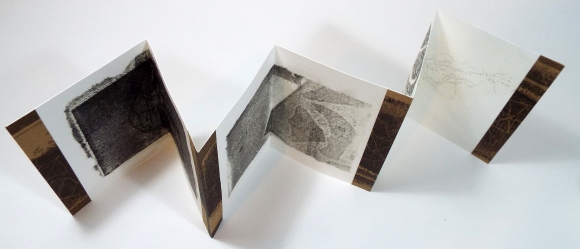
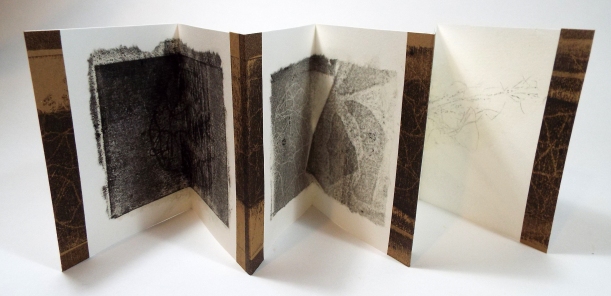
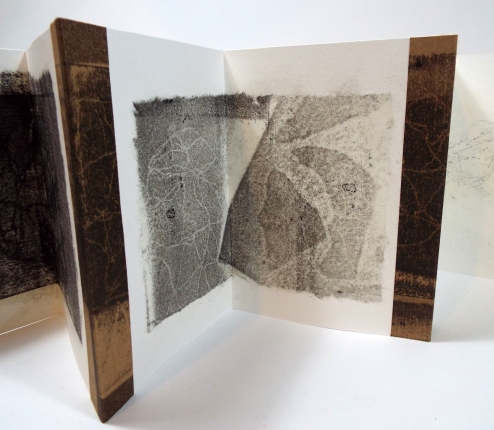
A5 watercolour paper was used which gave it a quality feel and takes the tissue prints well, melting into the surface when adhered with Golden Soft Gel (matte). The printed brown paper made a contrasting tab, with the similar texture of the black brayered ink unifying the prints and tabs.
A ‘Flag Book’ was constructed next. Here I learned that the flags are better made from card or heavy weight paper, the top and bottom rows were painted 140gsm paper which was a little ‘floppy’ whereas the middle row was a heavy, maybe 220gsm, watercolour paper. I like the design, it has impact as it is opened, but I think the printed design would need to be planned with the tabs in mind as it could be a bit busy.
Having found the diamond shape in the XBook appealing, I decided to make a ‘Back to Back Accordion Book’, to which I added hard covers. It was made with good quality cartridge paper and stands well. There is something simple and clean about the design, it is interesting but I can imagine the sharp folds and geometic shapes offsetting the soft prints well.
So this is my favourite so far, with the concertina in second place.
As a collection (without the khadi book), the samples complement one another,
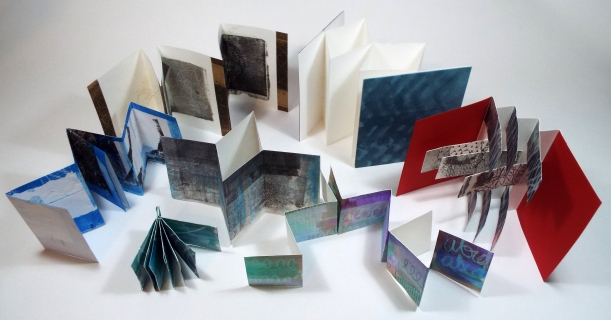
but in this instance, I think it would be cleaner to use one style and change the scale if the final piece is to be a series. So my next step is to work with the back-to-back accordian book, experiment with scale and try the structure without covers. I may try the tab method from the concertina book to make the accordian book.
Golden A (2010) Making handmade books:100 bindings, structures & forms LARK New York














